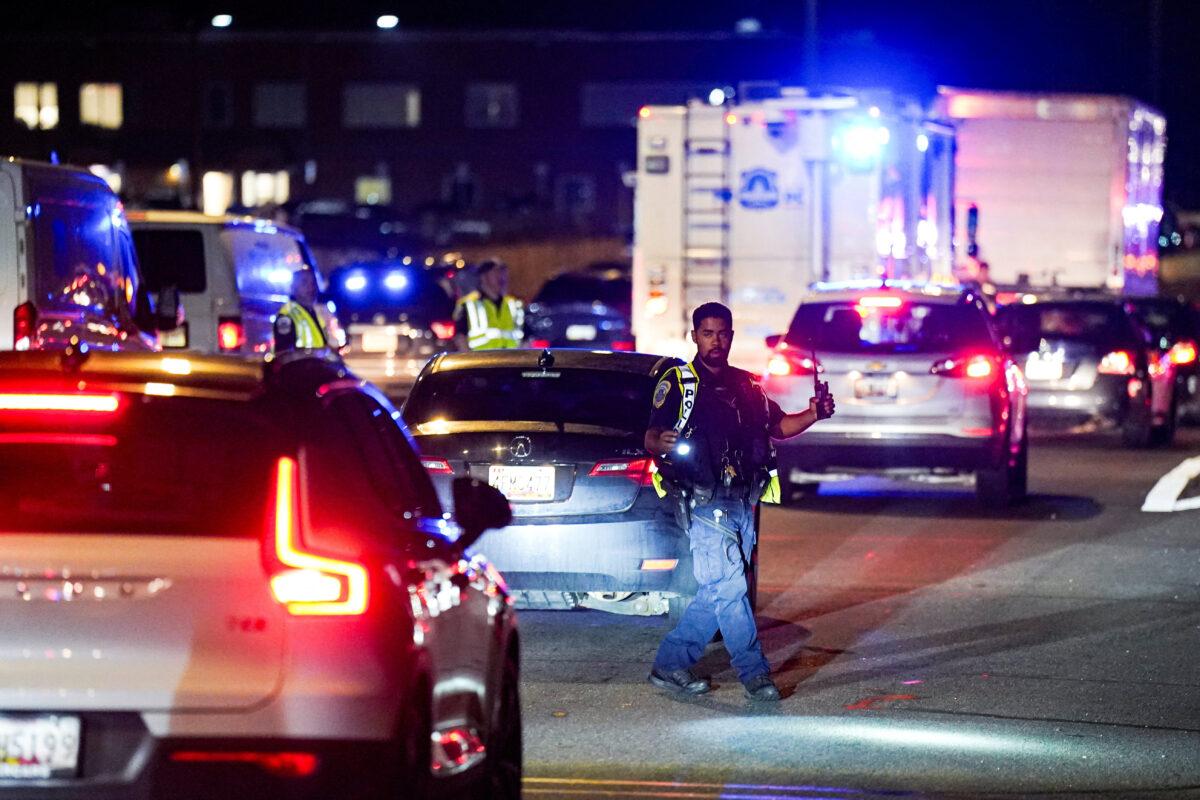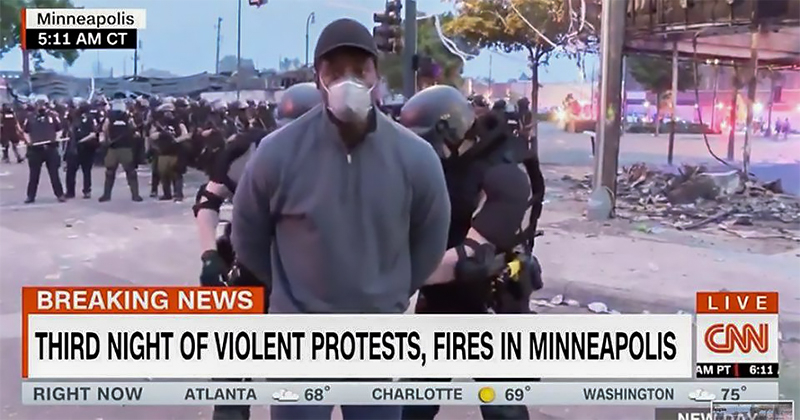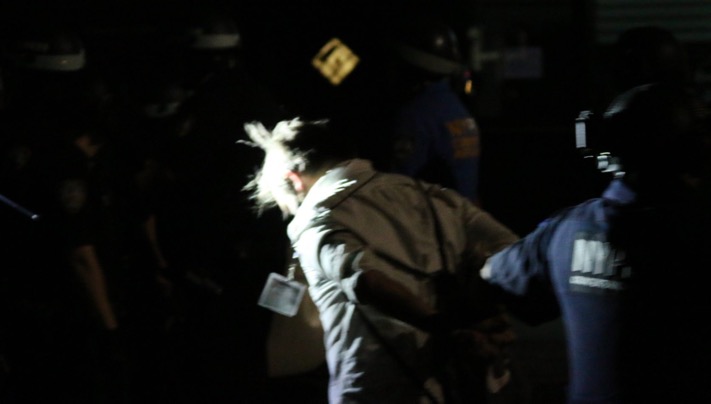Masked, Armed and Forceful: Finding Patterns in Los Angeles Immigration Raids
Armed and masked men leaping out of unmarked vehicles. Latino men taken from their places of work or while waiting for the bus. Street vendors roughly tackled to the ground and forcefully held down.
Since early June, the streets of Los Angeles have borne witness to frequent and aggressive immigration raids that have seen people suspected of being undocumented migrants detained. Some have been rapidly deported.
Between June 6 and June 22 alone, the Department of Homeland Security (DHS) reportedly arrested 1,618 people for deportation from LA and the surrounding areas of Southern California. This averages out at about 95 people a day, and arrests and deportations have continued in the period since.
Those numbers represent an increase over the months prior and appear to be in line with reports of apparent White House directives to up immigration-related arrests.
Bellingcat worked with our partners at Evident Media and CalMatters to gather and document social media and online footage of as many of the LA raids as possible.
We collected videos of just over 100 incidents starting on June 6, picking out sightings and what appear to be recurring trends and tactics used by officers. A full list of the incidents can be seen and downloaded here.
The footage shows officers from agencies including US Customs and Border Protection (CBP) and Immigration and Customs Enforcement (ICE), which operate under DHS, arresting people in public spaces, in places of work and outside residences. In some cases, it was unclear what agency officers were with due to a lack of clear identification.
In others, officers can be seen using significant force to detain people. In most cases officers keep their faces covered, concealing their identity. Unmarked vehicles were also used on numerous occasions.
The raids bear similarities to incidents previously investigated by Bellingcat, CalMatters and Evident Media in California. Earlier this year, agents from the El Centro Border Patrol Sector travelled over 300 miles from the US southern border to the city of Bakersfield to take part in what they said were targeted raids to apprehend immigrants with “criminal records”.
However, just how targeted that mission was became a point of significant tension, with rights and labour groups claiming it was anything but. Of 78 people arrested, only one had been flagged for prior removal.
In April, a federal judge issued a preliminary injunction in the wake of the Bakersfield raids barring Border Patrol from conducting warrantless raids in California’s Eastern District, stating that “you just can’t walk up to people with brown skin and say, ‘Give me your papers.’”
The American Civil Liberties Union (ACLU) and other industry and rights groups last week requested a similar injunction be put in place in California’s Central District, which includes Los Angeles.
The head of the El Centro unit, Gregory Bovino, is now in charge of the operations across Los Angeles. Agents from his El Centro Border Patrol unit have also appeared in videos of raids in LA neighbourhoods seen by Bellingcat. Bovino even appeared at a raid involving hundreds of officers in LA’s MacArthur Park on July 7.
To be clear, it is not possible to know exactly what transpired in every incident captured in our dataset. The vast majority of videos only offer snapshots of what occurred as most raids relied on the element of surprise. Witnesses, therefore, often did not appear to start recording until raids were under way. Similarly, many of the raids captured were in public spaces such as in parking lots or at strip malls. Others did occur at private residences, but incidents are more likely to be captured in places where more members of the general public are likely to be present, such as on busy thoroughfares. This is likely reflected in the data.
Judging by the number of people detained in LA over the last few weeks, the videos also only capture a portion of all the incidents that have actually taken place. Despite that, the available videos suggest a few trends that may offer clues as to the tactics being deployed by agents across the city.
From Pasadena to Long Beach, and from Playa Vista to Baldwin Park, incidents have been recorded across LA. Some have even stretched beyond Los Angeles County, with raids recorded in Oxnard, Santa Ana and Fontana.
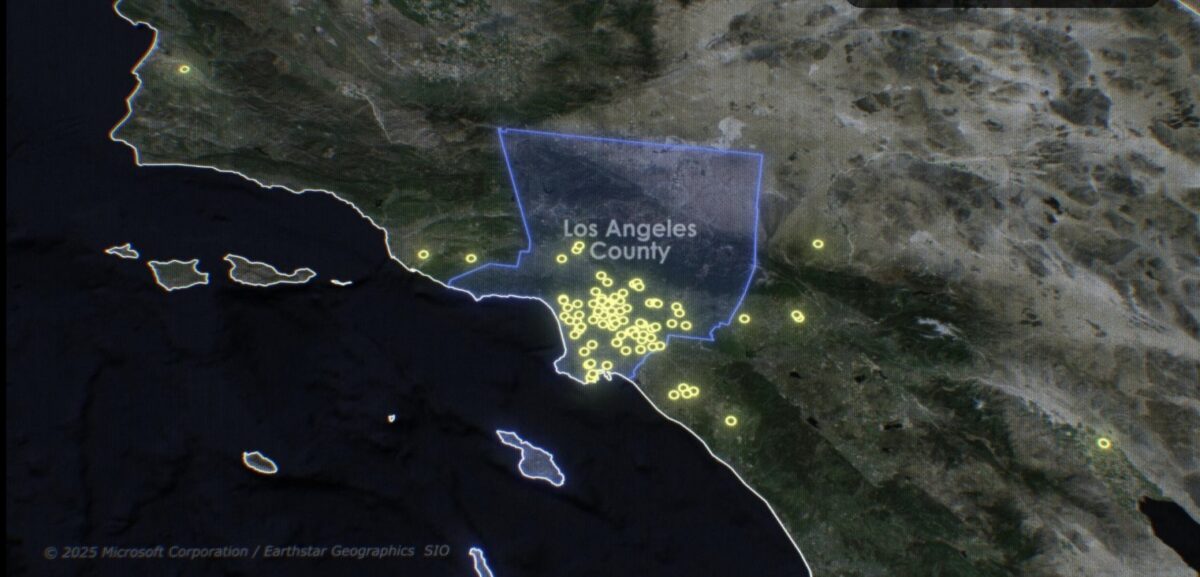
With billions in new funding heading for ICE operations in the near future, some believe what has happened in Los Angeles could be just the start of an even bigger immigration crackdown across the US. President Donald Trump also appeared to suggest as much in a June 16 Truth Social post, stating that he wanted to expand detention and deportation efforts to other cities like Chicago and New York.
Raids at Work
A striking number of videos showed people being arrested at what appeared to be their places of work. These included arrests at car washes, food stands and swap meets.
In one incident on June 22 at Bubble Bath Hand Car Wash in Torrance, numerous agents can be seen swarming the facility and approaching blue-shirted employees. One bystander told local broadcaster ABC7 Eyewitness News that she was able to stop the arrest of an employee by advising him not to answer questions. However, others were roughly handled by agents, some of whom appeared to be wearing ballistic armour and carrying guns.
Emmanuel Karim, the manager of Bubble Bath Hand Car Wash – who can be seen in the video angrily remonstrating with agents asking them “what are you doing here?” – told Bellingcat in a phone call that officers did not provide warrants or identification.
He had previously told the media that two of his workers were taken during the raid.
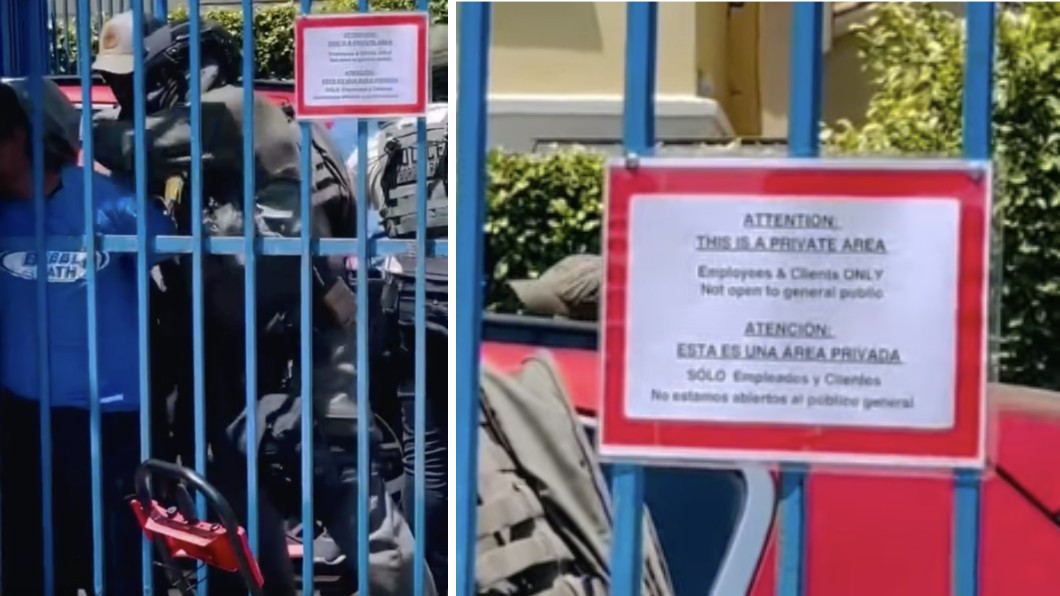
In total, our dataset documented 12 raids that appeared to specifically target car washes, including one that hit the same car wash twice. Industry group CLEAN Carwash Worker Center, however, has documented a much higher number. As of July 4, they told Bellingcat they had information detailing raids in at least 55 carwash locations, with some experiencing multiple raids over the month of June. CLEAN said they had documented at least 96 arrests, including of both carwash workers and customers.
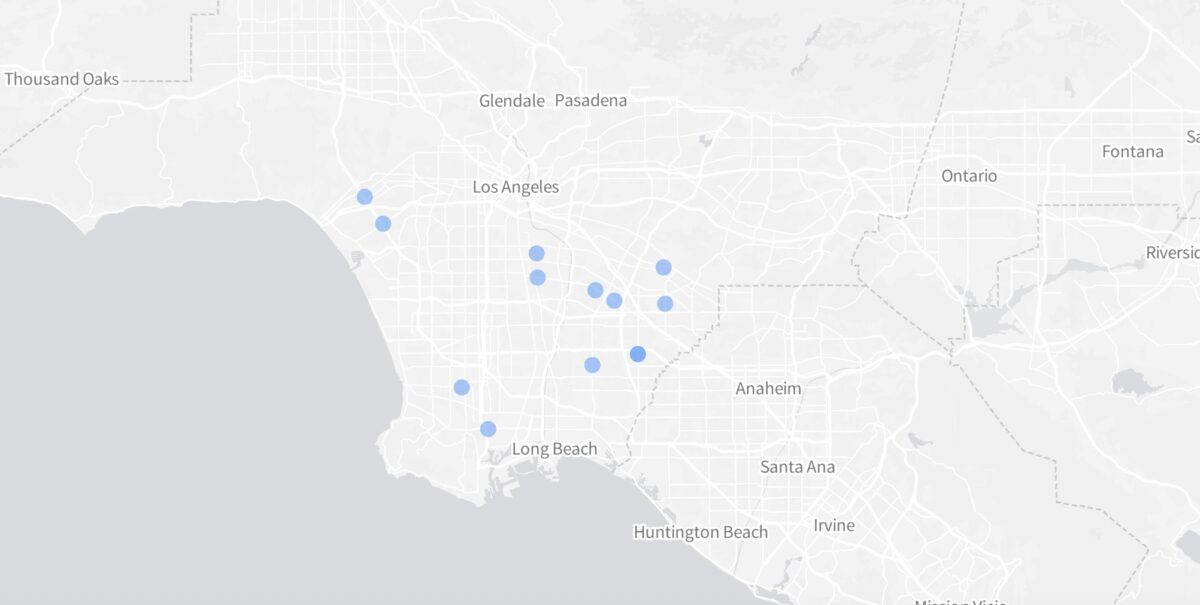
Another video from June 8 in Westchester showed a street vendor wrestled to the ground and surrounded by agents near his stall with their weapons drawn.
In another case on June 22, street food vendor Celina Ramirez clung to a tree as federal officers pulled up and arrested her outside a Home Depot in the Ladera Heights neighbourhood. A bystander told ABC7 Eyewitness News that officers did not provide identification as to who they were, nor did they provide a warrant. While some wore Border Patrol identification, there were also plain clothes officers. All appeared to be masked.

Support Bellingcat
Your donations directly contribute to our ability to publish groundbreaking investigations and uncover wrongdoing around the world.
The nature of such arrests has led some to claim that officers are racially profiling workers they may pass at the likes of street food stalls while also targeting businesses they assume will have a high proportion of Latino workers, such as car washes.
The ACLU lawsuit describes a “systematic pattern” where “individuals with brown skin are approached or pulled aside by unidentified federal agents, suddenly and with a show of force, and made to answer questions about who they are and where they are from”.
Such practices, where agents do not identify themselves or explain why an individual is being arrested are “contrary to federal law”, the ACLU lawsuit states.
Bellingcat asked DHS about the claims within the ACLU lawsuit as well as incidents at car washes and with the street vendors in Westchester and Ladera Heights. DHS did not comment specifically on the Westchester and Ladera Heights incidents. They also did not respond to the owner’s claims that agents did not provide a warrant or identification when they raided the Bubble Bath Hand Car Wash in Torrance.
But in an email sent after this article was initially published DHS Assistant Secretary, Tricia McLaughlin, responded to details in the ACLU lawsuit, stating that: “DHS targets have nothing to do with an individuals’ skin colour. What makes someone a target is if they are in the United States illegally. These types of disgusting smears are designed to demonise and villainise our brave ICE law enforcement. ”.
McLaughlin added: “DHS enforcement operations are highly targeted, and officers do their due diligence. We know who we are targeting ahead of time. If and when we do encounter individuals subject to arrest, our law enforcement is trained to ask a series of well-determined questions to determine status and removability.”
Strip Malls and Home Depot Parking Lots
On June 16, a video of a bystander questioning two ICE agents handcuffing and arresting a man in LA county’s Hacienda Heights was shared online. The man said his name is Leo Torres and when the bystander questioned whether the agents had a warrant for his arrest they replied: “This is a public place, we don’t need a warrant.”
Torres was picked up outside an area that appears to be a strip mall. Our dataset showed 25 incidents at such facilities. But raids were captured on video most regularly near outlets of one brand in particular.
In total, incidents were recorded outside or close to 17 different Home Depots – a common place for day labourers to pick up materials for their work or to pick up work itself.
For example, in a video captured on June 19 an agent in a Border Patrol uniform can be seen chasing a man in the parking lot of a Home Depot in Burbank.
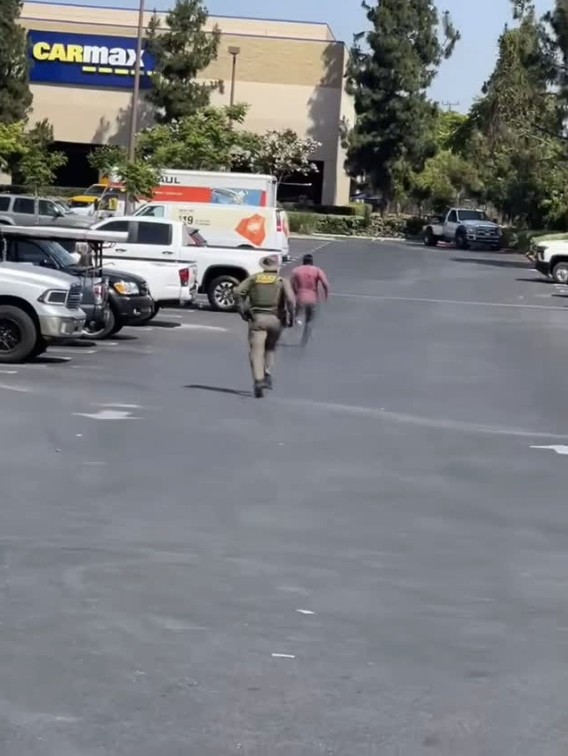
In another incident on June 22, a man was pinned to the ground in a Home Depot parking lot in Gardena. Signs displaying prices of items for sale can be seen at the start of the video that match the font used at Home Depot locations.
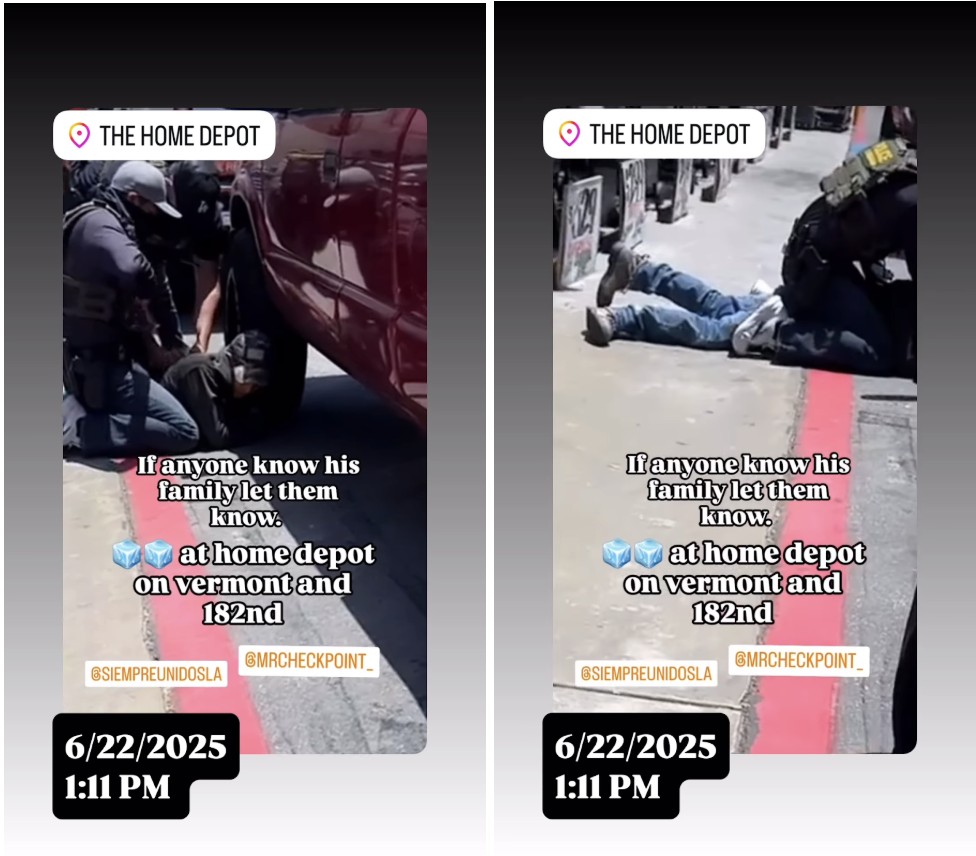
In another incident on June 9, video footage uploaded from multiple angles showed officers running after and questioning a man near a Home Depot in Huntington Park. The footage also showed other officers chasing others who were nearby.
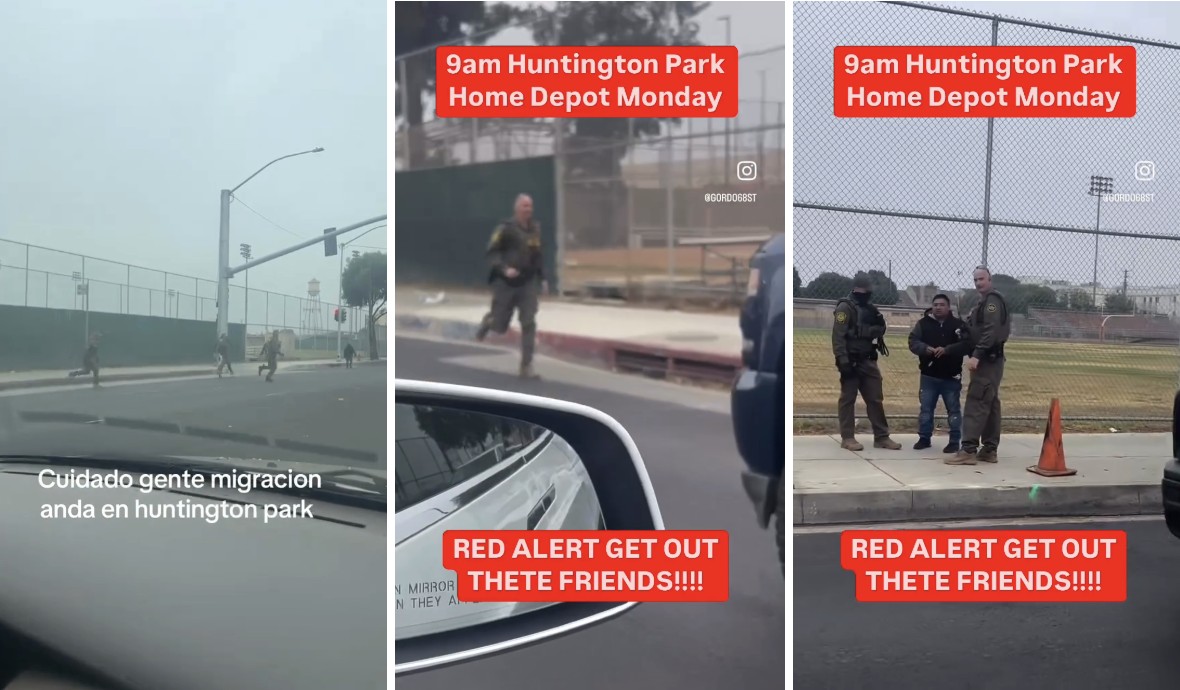
While it was not possible to identify the vast majority of the people detained in the videos gathered, the raids at Home Depots bear a striking similarity to the Bakersfield operation conducted by El Centro Border Patrol earlier this year.
Back then, eight of just over 50 videos gathered by Bellingcat, Evident and CalMatters appeared to take place in Home Depot parking lots.
Bellingcat asked DHS if agents had been targeting Home Depots without necessarily having warrants for people they expected to encounter there but did not receive a direct response on this question.
Masked and Unmarked
Identifying who or, indeed, what agency is carrying out a particular raid in the videos collected is not a simple task. Many agents wear masks or keep facial features covered, concealing their identity.
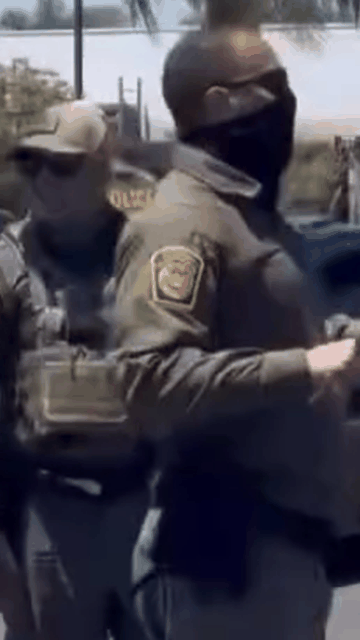
Because it is often unclear who these agents are, many videos show bystanders asking agents for identification, a warrant, a badge number or who they are with. In one video on June 23 at a Home Depot in Inglewood, an officer is asked for his badge number by a bystander who is filming a man being taken away. The officer briefly flashes his badge before dashing into the back of a car that speeds away.
Similarly, officers can be seen wearing plain clothes instead of uniforms in many videos, thus making it difficult to ascertain which agency they belong to.
Some have warned that the heavy use of masks and shielding of identity makes it easier for fraudsters or imposters to pretend to be federal officers or law enforcement to commit crimes. There have already been a number of cases where this has happened in the last month, including in Philadelphia, New York and Los Angeles. However, acting ICE Director, Ted Lyons, has said officers are covering their identity to protect themselves and their families from harassment.
A new bill being proposed called the “No Secret Police Act” would require local, state, and federal officers from covering their faces during operations in California.
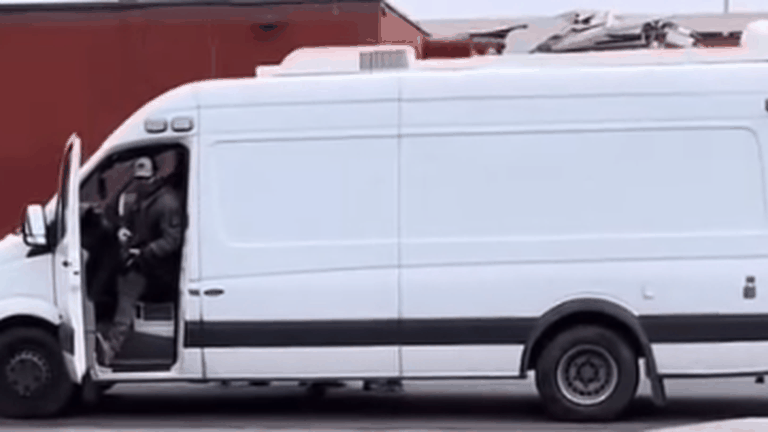
Unmarked vehicles are also regularly seen being used by arresting officers in videos. Bellingcat was able to identify several instances where the same unmarked cars appeared in separate videos in different parts of the city. The cars were identifiable by their number plates.
Other vehicles being used by officers, including Border Patrol vehicles that bear individual identifying numbers, could also be seen in multiple videos.
In an emailed response to questions sent after this article was initially published, a DHS spokesperson said: “When our heroic law enforcement officers conduct operations, they clearly identify themselves as law enforcement while wearing masks to protect themselves from being targeted by highly sophisticated gangs like Tren de Aragua and MS-13, criminal rings, murderers, and rapists.”
Use of Force and Intimidation
Several videos in the dataset appear to show significant force being used by agents.
A number of incidents featured heavily armed or aggressive officers. Agents can be seen carrying rifles, handguns, and wearing military wear, from camouflage uniforms to helmets and ballistic vests.
One notable instance was the June 16 raid at the Sante Fe Springs Swap Meet that reportedly saw dozens of agents, many of whom were heavily armed, raid a popular swap meet where families were in attendance. Border Patrol filmed this raid and posted a video on their Instagram account. The video shows a number of officers carrying weapons, wearing protective gear, preparing for the raid and walking through the swap meet. A sign which reads “Family Fun Live Music Shopping” can be seen in the video. The raid reportedly resulted in the arrest of two individuals. Businesses there have since complained that the raids have put people off from coming back.
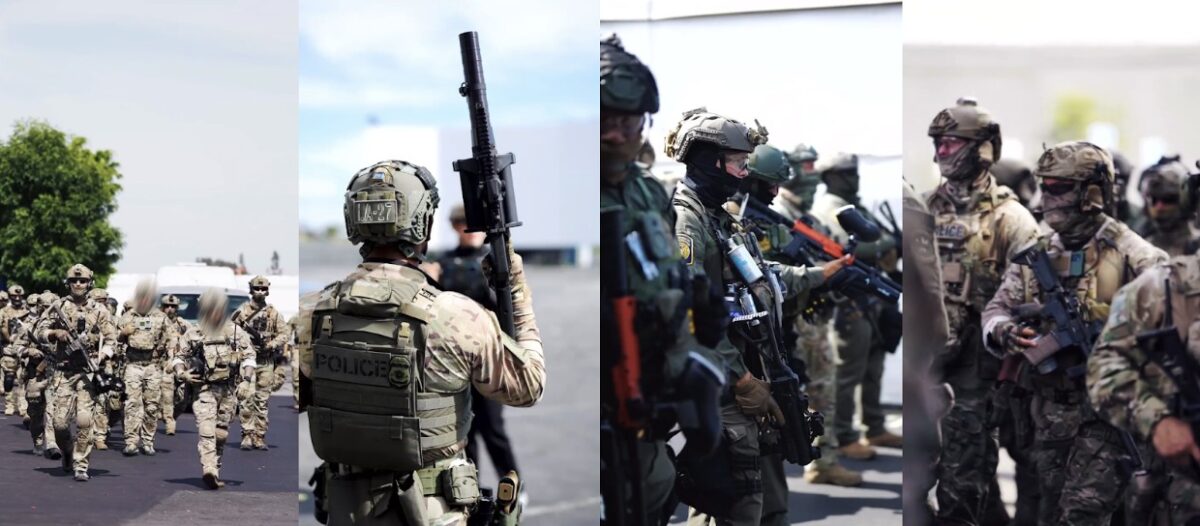
In another incident on June 29, video footage showed the arrest of two men on a street in Santa Ana. Agents appeared to use batons on both men as they lay on the ground. An eye witness stated that agents used pepper spray after one of the men was already on the floor. Federal officials later told local news outlet, KTLA, that one of the arrested men was a Mexican national present in the US illegally, although they did not detail how officers first engaged with the two men or if they were individuals known to law enforcement. The same officials also said to KTLA that officers were attacked by “a violent mob” protesting the detainments before all suspects were arrested.
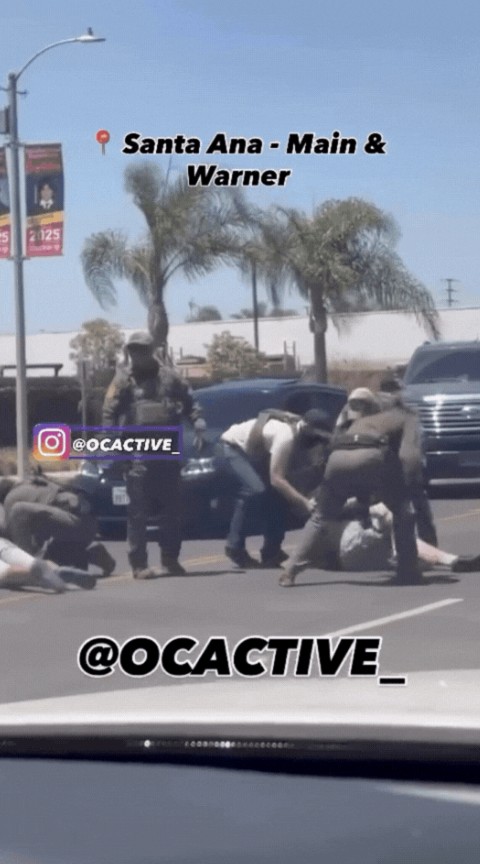
Other incidents showed officers pointing guns at a man trying to escape in a car and another who was trying to take a photo of a federal agent’s licence plate. One man could be seen with blood pouring from his head after officers smashed his car window and dragged him from his vehicle in another incident captured in the dataset.
Subscribe to the Bellingcat newsletter
Subscribe to our newsletter for first access to our published content and events that our staff and contributors are involved with, including interviews and training workshops.
On June 24, during an ICE raid in the Fashion District in Los Angeles, agents from multiple agencies were seen tackling a man, Luis Hipolito, pushing him on top of a curb. A video shows one officer put an arm around his neck as multiple agents pile on top of him and appear to punch the back of his legs. Moments later, he begins convulsing on the ground.
Hipolito is a US citizen and was apparently filming the arrests of street vendors in the area. As reported by the LA Times, officers ordered Hipolito to leave the scene. When he did not, an officer sprayed him in the face with a substance, the LA Times reported. Video shows Hipoloito swinging his arm in response but it is not clear in the video if his hand connected with the officer. He is being charged with assault for allegedly punching an agent before he was tackled and wrestled to the ground. Hipolito’s family has since said that he did not intentionally touch the agent and that he had been blinded by what they said was pepper spray to his face. They said it was a natural reaction to being unable to see after being pepper sprayed. The LA Times reported that DHS Assistant Secretary Tricia McLaughlin had said the actions of Hipolito and another US citizen had “kept ICE law enforcement from arresting the target illegal alien of their operation.”
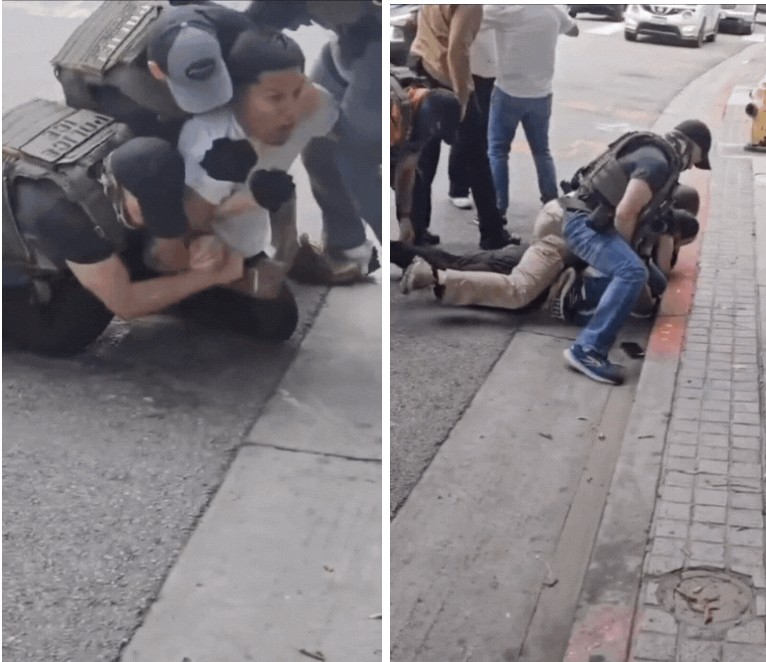
There have been numerous reports of US citizens being detained by ICE. In one June 12 incident, a video showed a US citizen being chased and detained by Border Patrol before being eventually let go. Before leaving, however, one of the officers asks: “Why did you run?”
While it is not clear if the only reason they sought to detain this individual was because he ran, that would seem to align with a promotional video published on the Customs and Border Protection YouTube page where an officer can be heard saying, “If they run, we go”.
In response to questions from Bellingcat about whether force used by officers was always proportional or if there were instances where any had gone too far, DHS responded after this article was initially published. McLaughlin said that agents are trained to “use the minimum amount of force necessary to resolve the situation in a manner that prioritises the safety of the public and our officers”.
She added: “Resisting arrest places those being arrested, the agents, and the community at risk. Law enforcement is now facing a nearly 700 percent increase in assaults while carrying out enforcement operations. But this will not deter [Customs and Border Protection] – we will continue enforcing the law and protecting American communities.”
This article was updated on Wednesday July 9, 2025, to include responses from the Department of Homeland Security which were received after initial publication time.
Bellingcat is a non-profit and the ability to carry out our work is dependent on the kind support of individual donors. If you would like to support our work, you can do so here. You can also subscribe to our Patreon channel here. Subscribe to our Newsletter and follow us on Bluesky here and Mastodon here.
